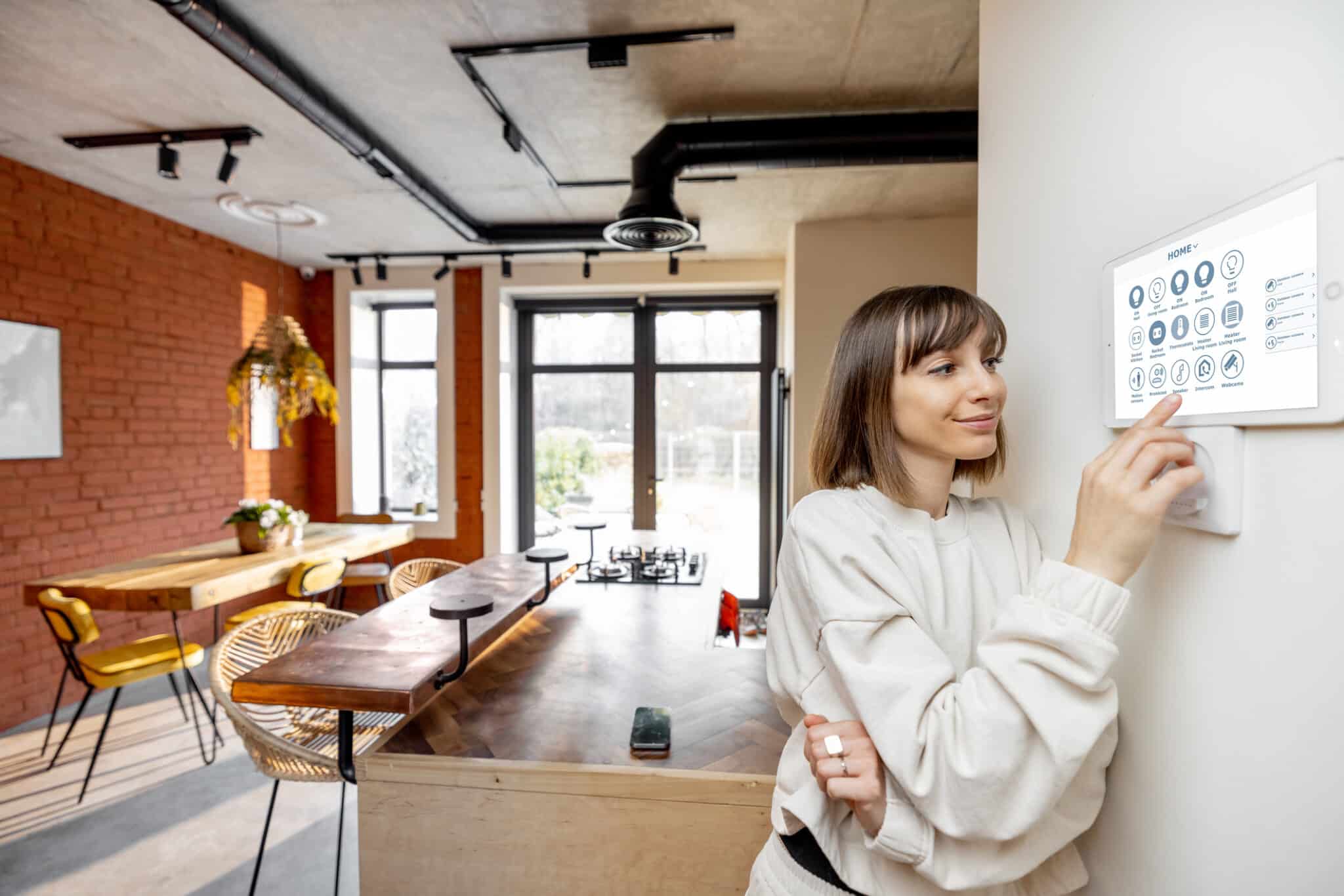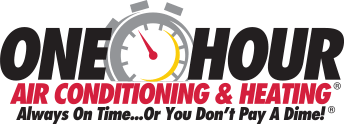
Ultimate Guide to Seamless Ventilation Optimization
Ensuring your home breathes just as well as you do is crucial for both comfort and health. Ventilation optimization is the key to achieving this balance, enhancing air quality while also improving energy efficiency. Whether you’re nestled in the bustling streets of Allen, TX, or enjoying the serene landscapes of Argyle, TX, optimizing your home’s ventilation can significantly impact your living environment. It’s not just about moving air in and out, it’s about doing so smartly and efficiently.
One Hour Air Conditioning & Heating, based in Dallas, Texas, understands the importance of a well-ventilated home. Ventilation optimization is more than a luxury, it’s a necessity for maintaining a healthy and energy-efficient home. With the right strategies, homeowners can enjoy fresher air, reduced allergens, and even lower energy bills. It’s about creating a living space that not only feels good but is also good for you.
The journey to optimized ventilation begins with understanding your current system’s performance and identifying areas for improvement. This process isn’t one-size-fits-all, every home has its unique needs and challenges. From the humid summers of Texas to the chilly winters, ensuring your ventilation system can handle the diverse climate is essential. It’s a tailored approach that considers everything from air flow to energy consumption.
Embracing ventilation optimization is a step towards a healthier, more comfortable home. It’s an investment in your family’s well-being and your home’s efficiency. As we delve deeper into how to achieve optimal ventilation, remember that the goal is to enhance your living environment in a way that benefits you daily. With the right knowledge and support, your home can become a beacon of comfort and efficiency.
Understanding Ventilation Optimization Basics
Understanding the basics of ventilation optimization is the first step towards a healthier home. It involves evaluating your current system to pinpoint inefficiencies and areas that need improvement. By doing this, homeowners in Allen, TX, and beyond can ensure their systems are not only effective but also energy-efficient. This foundational knowledge is crucial for making informed decisions about your home’s ventilation needs.
Ventilation optimization revolves around enhancing air flow and quality while minimizing energy use. It’s a delicate balance, requiring a comprehensive approach that considers the unique layout and needs of your home. For residents in Argyle, TX, this might mean addressing specific challenges posed by local climate conditions. Achieving optimal ventilation ensures a comfortable living environment, regardless of the weather outside.
To optimize your home’s ventilation, it’s important to focus on both natural and mechanical solutions. Natural ventilation strategies utilize windows and vents to encourage fresh air flow, reducing the need for mechanical intervention. On the other hand, mechanical systems, such as HVAC units, can be fine-tuned for efficiency, ensuring they provide the necessary air exchange without excessive energy consumption. Combining these approaches can lead to a more sustainable and pleasant home atmosphere.
Finally, regular maintenance plays a pivotal role in ventilation optimization. Keeping vents clean and ensuring your HVAC system is in top condition prevents common issues that can hinder performance. This proactive approach not only improves air quality but also extends the lifespan of your system. By embracing these basic principles, homeowners can take significant strides towards achieving a more efficient and healthy living space.

The Importance of Regular Ventilation Maintenance
Regular ventilation maintenance is a cornerstone of ventilation optimization, ensuring systems run smoothly and efficiently. In Allen, TX, where temperatures can swing dramatically, this maintenance is particularly crucial. Homeowners who prioritize regular check-ups for their ventilation systems can prevent unexpected breakdowns. This proactive approach keeps air quality high and energy consumption low.
Cleaning and replacing filters is a simple yet effective step in maintaining optimal ventilation. Over time, filters in HVAC systems become clogged with dust and allergens, reducing air flow and efficiency. By keeping these filters clean, residents in Argyle, TX, can enjoy fresher air and a healthier living environment. Regular filter maintenance ensures that ventilation systems do not overwork, leading to better performance and longevity.
Another key aspect of ventilation maintenance is inspecting ducts and vents for leaks or blockages. Even minor leaks can significantly impact a system’s efficiency, leading to increased energy use and costs. Homeowners should ensure that vents are clear of obstructions that can restrict air flow. Addressing these issues promptly supports ventilation optimization by maintaining consistent and efficient air distribution throughout the home.
Finally, scheduling professional HVAC inspections can uncover issues that are not immediately apparent to homeowners. Experts can assess the entire ventilation system, from ductwork to outdoor units, ensuring everything operates at peak efficiency. These inspections can identify potential problems before they escalate, saving homeowners from larger issues down the line. Embracing regular maintenance is a smart strategy for anyone looking to optimize their home’s ventilation for better air quality and energy efficiency.
How to Assess Your Home’s Ventilation Needs
To accurately assess your home’s ventilation needs, begin by observing your living environment’s air quality and comfort level. Notice if certain rooms feel stuffy or have a persistent odor, which can indicate poor air circulation. In places like Allen, TX, where seasonal allergies are common, improved ventilation can significantly reduce indoor allergens. Taking note of these signs helps pinpoint areas where your ventilation system may require enhancements.
Next, consider the age and design of your home. Older homes, especially those in historic areas like Argyle, TX, might not have been built with modern ventilation standards in mind. These homes may benefit from updates to ensure efficient air flow. Evaluating your home’s layout and existing ventilation infrastructure is crucial for identifying specific needs.
Implementing a balanced approach to ventilation optimization involves combining natural and mechanical methods effectively. Use windows and vents to introduce fresh air naturally, and rely on your HVAC system to remove stale air. This balance ensures that your home maintains a steady supply of clean air without overburdening your mechanical systems. Such a strategy is particularly effective in maintaining a comfortable indoor climate year-round.
Lastly, consider the role of indoor plants and air purifiers in enhancing your home’s air quality. Plants can naturally filter toxins from the air, while air purifiers capture airborne particles. Integrating these elements into your home complements your ventilation system, creating a healthier living environment. By assessing your home’s specific needs and implementing these strategies, you can achieve optimal ventilation and enjoy a fresher, more comfortable home.
Steps for Achieving Optimal Airflow in Every Room
Achieving optimal airflow in every room begins with the strategic placement of furniture and rugs. These items can block vents and restrict air movement, leading to uneven temperatures. By arranging your space to promote free air circulation, you ensure that each room benefits from efficient ventilation. This simple adjustment can significantly enhance the comfort and air quality of your home.
Next, consider the benefits of using fans in conjunction with your HVAC system. Ceiling fans, for instance, can help distribute air more evenly throughout your home, preventing hot or cold spots. In cooler months, adjusting the fan direction can push warm air down, improving the overall efficiency of your heating system. Fans are a cost-effective way to support ventilation optimization, ensuring a comfortable environment in places like Allen, TX.
Regularly assessing the seal of windows and doors is also crucial for maintaining optimal airflow. Gaps can allow outside air to enter, disrupting your home’s climate control. By sealing these leaks, you not only improve air quality but also enhance the efficiency of your HVAC system. This step is particularly important in historic homes in Argyle, TX, where drafts are more common.
Finally, incorporating smart thermostats into your ventilation strategy offers precise control over your home’s climate. These devices can adjust your HVAC system’s operation based on your habits and preferences, ensuring optimal air distribution without unnecessary energy use. By embracing these steps, homeowners can achieve balanced and efficient airflow in every room, contributing to a healthier and more comfortable living space.
Ventilation Optimization for Energy Efficiency
Ventilation optimization plays a pivotal role in enhancing energy efficiency within homes. By strategically managing airflow, homeowners can significantly reduce the workload on their HVAC systems. In Allen, TX, for instance, optimizing ventilation can lead to a more balanced indoor climate, minimizing the need for constant heating or cooling. This approach not only supports a comfortable living space but also contributes to energy conservation.
Incorporating energy recovery ventilators (ERVs) or heat recovery ventilators (HRVs) is another effective strategy for ventilation optimization. These systems work by exchanging the air inside your home with fresh outdoor air, all while conserving the temperature of the indoor air. For homes in Argyle, TX, where temperatures can fluctuate, using an ERV or HRV can maintain indoor comfort without excessive energy use. This method ensures that fresh air is consistently circulated, promoting a healthier indoor environment.
Adjusting your HVAC system’s settings according to seasonal changes can also aid in optimizing ventilation for energy efficiency. During the cooler months, setting your system to recirculate indoor air can help retain warmth, reducing the need for additional heating. Conversely, in warmer seasons, allowing for more fresh outdoor air can help cool the home naturally, lessening the reliance on air conditioning. This adaptive strategy ensures that your home remains comfortable year-round while conserving energy.
Lastly, educating yourself on the latest ventilation technologies and practices can lead to more informed decisions about your home’s ventilation system. Staying updated on efficient ways to manage home air quality and temperature can uncover new opportunities for energy savings. Whether it’s through adopting new ventilation solutions or tweaking existing systems, homeowners can achieve a balance between optimal air quality and energy efficiency. By embracing these strategies, the goal of a healthier, more energy-efficient home becomes attainable.
Selecting the Right Tools and Equipment for Ventilation
Selecting the right tools and equipment is crucial for effective ventilation optimization. Homeowners in Allen, TX, should consider energy-efficient fans and air purifiers that complement their HVAC systems. These devices can significantly improve air circulation and quality, making them essential for a well-ventilated home. Additionally, choosing products with high energy efficiency ratings ensures that your ventilation efforts are both effective and sustainable.
In Argyle, TX, where climate conditions vary, incorporating smart thermostats into your ventilation strategy can offer substantial benefits. These thermostats adjust heating and cooling based on your preferences and habits, optimizing your home’s ventilation without unnecessary energy use. Smart thermostats can also identify the most efficient times to ventilate your home, ensuring fresh air is introduced at optimal moments. This smart technology supports your goal of achieving a balanced and energy-efficient indoor environment.
For those looking to enhance their home’s ventilation, it’s important to focus on the quality of the air filters in your HVAC system. High-performance filters capture a greater amount of airborne particles, improving indoor air quality. Regularly replacing these filters as part of your maintenance routine ensures that your system operates efficiently, contributing to the overall optimization of your home’s ventilation. This simple step can make a significant difference in the air you breathe daily.
Lastly, exploring the addition of ERVs or HRVs can be a game-changer for homeowners aiming for optimal ventilation. These systems efficiently exchange stale indoor air with fresh outdoor air, maintaining comfortable indoor temperatures. By selecting the right model for your home’s specific needs, you can enjoy the benefits of continuous fresh air without a significant impact on your energy usage. This approach to ventilation optimization not only enhances air quality but also contributes to a more energy-efficient home.
Innovative Technologies in Home Ventilation
Exploring innovative technologies has become a cornerstone in the quest for ventilation optimization, offering new avenues for enhancing home comfort and efficiency. In Allen, TX, homeowners are turning to smart ventilation systems that adjust airflow dynamically, responding to changes in indoor air quality and temperature. These systems use sensors to detect pollutants and humidity levels, ensuring that air circulation is always at its optimal level. This approach not only improves air quality but also supports energy efficiency by adapting to real-time conditions.
In Argyle, TX, the adoption of UV air purifiers within HVAC systems represents a significant leap forward in maintaining a healthy indoor environment. By integrating UV technology, these purifiers can eliminate airborne pathogens and allergens, contributing to cleaner air throughout the home. This innovation is particularly beneficial for families with allergies or respiratory issues, offering them peace of mind and a safer living space. Moreover, it complements existing ventilation strategies by targeting contaminants that traditional filters might miss.
Another noteworthy advancement is the use of geothermal heat pumps for effective temperature control and ventilation. These systems leverage the stable temperatures underground to heat and cool homes more efficiently, significantly reducing the reliance on traditional HVAC systems. By incorporating this technology, homeowners can achieve a more sustainable balance between maintaining comfortable indoor temperatures and optimizing ventilation. This not only enhances the overall energy efficiency of the home but also contributes to a reduction in environmental impact.
Lastly, the integration of smart home ecosystems has revolutionized how homeowners manage ventilation optimization. By connecting HVAC systems to a central smart home hub, residents can control ventilation settings from anywhere, anytime. This convenience allows for adjustments to be made based on occupancy, weather, and personal preferences, ensuring that ventilation is always aligned with the homeowners’ needs. This level of control and customization is key to achieving a ventilation system that not only supports a healthy indoor environment but does so with unparalleled efficiency and ease.

Implementing Smart Controls for Enhanced Ventilation
Implementing smart controls in your home’s ventilation system significantly enhances its efficiency and adaptability. In Allen, TX, residents can experience improved air quality and comfort by using smart thermostats that adjust ventilation based on real-time indoor conditions. These devices can learn your habits and preferences, optimizing air flow without manual intervention. This approach ensures your home maintains optimal air quality, seamlessly adjusting to your lifestyle.
In Argyle, TX, homeowners are discovering the benefits of smart vents in conjunction with traditional HVAC systems for targeted ventilation optimization. Smart vents open and close based on room occupancy and temperature, distributing air more evenly throughout the home. This method prevents overcooling or overheating in unused spaces, ensuring energy is used efficiently. By focusing on the areas that need ventilation the most, smart vents contribute to a balanced and comfortable indoor environment.
The integration of air quality monitors offers another layer of control in ventilation optimization. These devices continuously assess the levels of pollutants and humidity in your home, providing valuable data to your smart HVAC system. With this information, your system can activate when air quality dips below a certain threshold, maintaining a healthy living space. This proactive approach to ventilation keeps the air fresh and clean without constant manual adjustments.
Lastly, embracing smart home assistants for voice-controlled ventilation adds convenience and accessibility to managing your home’s air quality. Residents in both Allen, TX, and Argyle, TX, can benefit from the ease of adjusting their ventilation settings with simple voice commands. This technology not only enhances the functionality of your ventilation system but also aligns with a modern, efficient lifestyle. By adopting these smart controls, homeowners can achieve unparalleled ventilation optimization, ensuring their living spaces are both comfortable and energy-efficient.
Frequently Asked Questions
What is seamless ventilation optimization?
Seamless ventilation optimization involves fine-tuning your home’s air systems for peak performance. It ensures fresh air flows efficiently, improving indoor air quality and energy use. By adjusting vents and filters, the process reduces allergens and pollutants. This method not only enhances comfort but also supports a healthier living environment.
How can airflow be improved in buildings?
Improving airflow in buildings starts with regular maintenance of heating, ventilation, and air conditioning systems. Cleaning or replacing filters frequently ensures that air moves smoothly and efficiently. Opening windows or installing trickle vents helps introduce fresh air, enhancing the overall ventilation optimization. Finally, ensuring that furniture does not block vents allows for the free circulation of air, contributing to a healthier indoor environment.
What are common ventilation mistakes?
Common ventilation mistakes often include neglecting air filter changes, leading to reduced airflow and efficiency. Many also overlook the importance of proper vent placement, which can hinder optimal air distribution. Ignoring regular system maintenance contributes to decreased performance over time. Lastly, failing to balance the system can result in uneven heating or cooling, affecting comfort and energy usage.
What tools are needed for ventilation optimization?
For ventilation optimization, a few essential tools are needed. An anemometer measures airflow speed in ducts, ensuring efficient operation. HVAC gauges help check system pressure, vital for maintaining optimal performance. A thermometer gauges the temperature in various parts of the home, identifying areas needing adjustment. Lastly, smart thermostats allow for precise control over the home’s climate, contributing significantly to energy efficiency and comfort.
How does ventilation optimization save energy?
Ventilation optimization enhances energy efficiency by ensuring air systems work less while achieving better results. By improving airflow, it reduces the strain on heating and cooling units, leading to less energy use. Regular maintenance keeps these systems running smoothly, avoiding unnecessary energy consumption. Ultimately, this process contributes to a more comfortable home environment with lower energy demands.







